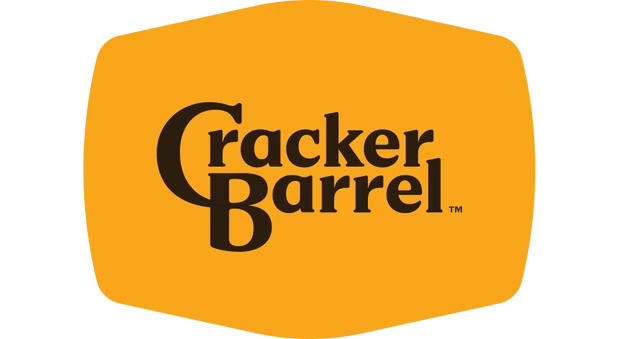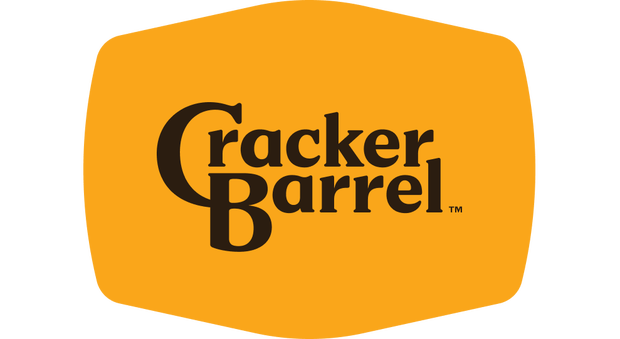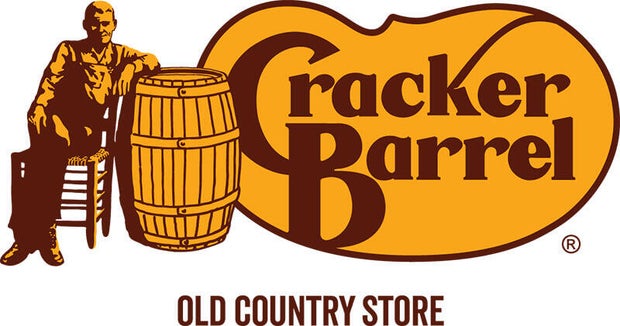When Cracker Barrel unveiled its new logo last week as part of an ongoing brand refresh, it wouldn’t have expected the marketing move to spark a public furor and cause the restaurant chain’s value to sink by nearly $100 million.
Yet the episode highlights the potential perils of tinkering with a company’s branding. Following the backlash, Cracker Barrel conceded that its rebrand amounted to a misstep, saying in a statement on Monday that it “could’ve done a better job sharing who we are and who we’ll always be.”
On Tuesday, Cracker Barrel decided to scrap the new logo entirely and keep the original design. “We thank our guests for sharing your voices and love for Cracker Barrel,” the company announced on social media. “We said we would listen, and we have. Our new logo is going away and our ‘Old Timer’ will remain.”
The decision came after President Trump on Tuesday publicly urged the company to ditch the new logo. “Cracker Barrel should go back to the old logo, admit a mistake based on customer response (the ultimate Poll), and manage the company better than ever before,” Mr. Trump wrote on Truth Social.
Much of the initial uproar focused on the new Cracker Barrel logo doing away with the image of an older gentleman sitting in a wicker chair leaning against a barrel. The man depicts company founder Dan Evins’ Uncle Herschel, whom Cracker Barrel insists will remain an integral part of its brand identity.
“Uncle Herschel will still be on our menu…on our road signs and featured in our country store. He’s not going anywhere — he’s family,” Cracker Barrel said.
Cracker Barrel’s stock price was up roughly 5% ahead of the start of trade on Wednesday, helping erase the company’s earlier market loss.
Tom Murphy, a branding expert and professor at Clark University, told CBS MoneyWatch that he thinks Cracker Barrel did the right thing in backtracking on its logo rollout.
“The decision by Cracker Barrel to return to its original logo is a positive course correction, given the intensity of emotional response from their core base of customers,” he said. “This gives them an opportunity to reinforce the fact that they are not moving away from their brand purpose or their heritage.”
Brands as stories
Marketing experts panned Cracker Barrel’s attempt at overhauling its logo.
“From a branding perspective, it’s basically a flop,” said David E. Johnson, CEO of branding agency Strategic Vision PR Group, of Cracker Barrel’s logo redesign. “What they did wrong is they went against their brand story, which was the old logo, that reflected the southern, whimsical atmosphere in the stores.”
In Johnson’s view, Cracker Barrel’s mistake was that it replaced a logo with genuine symbolic currency for a “very generic looking logo that doesn’t tell a story.” Other branding experts say the hubbub is the result of a business severing its design from its roots — a cardinal sin for a company like Cracker Barrel whose folksy image is meant to evoke “homestyle country cooking.”
More specifically, Cracker Barrel’s new logo retains the rustic color palette of the original design, while removing the image of an older gentleman sitting in a wicker chair leaning against a barrel.
The first Cracker Barrel restaurant was launched in Lebanon, Tennessee, in 1969 by Evins while working for his family’s gasoline business. The idea was to recreate the kind of homey restaurants he’d enjoyed as a child, according to the company’s website. And until the logo redesign, the figure of Herschel had been central to much of the restaurant’s branding and merchandise.
Cracker Barrel
Cracker Barrel
The decision to remove both Herschel and the namesake barrel from the logo irked some Cracker Barrel loyalists because the original image represented what franchise consultant and branding expert Nick Yeonakis called a “throwback to a simpler time that was about home cooking.”
“So, people have this image in their mind of a Cracker Barrel that is constant and stable, and that’s why when they rebranded, backlash happened,” he said.
Still, marketing experts agree that Cracker Barrel, which operates nearly 660 corporate-owned locations across the U.S., was due for an image revamp. The company’s growth, which soared in the 1990s, has slowed in recent years. In 2024, the company reported revenue of roughly $3.5 billion, up less than 1% from $3.4 billion the previous year, while net income fell to $40.9 million, down sharply from $99 million in 2023.
In 2024, concerns over its competitiveness and stagnant growth prompted the company, led by new CEO and former Taco Bell executive Julie Felss Masino, to announce changes to its restaurants, menu and pricing.
The chain had become less relevant in part because it had leaned too heavily on the “timeless nature of our concept,” Masino said in a May 2024 conference call with Wall Street analysts. “The goal, simply put, was to freshen things in such a way as to be noticeable and attractive but still feel like Cracker Barrel,” she said.
Today, Cracker Barrel maintains that its restaurants will retain their old-timey vibe, including using Uncle Herschel in its marketing.
“We love seeing how much you care about our ‘old-timer.’ We love him too,” Cracker Barrel said Monday.
According to a recent YouGov survey of 1,000 adults, 76% of those polled said they prefer the company’s old logo to the new one.
Sign of the times
Customer anger over Cracker Barrel’s new logo also reflects the culturally and politically charged environment companies face today. For example, when Bud Light partnered with transgender influencer Dylan Mulvaney in 2023, some customers called for a boycott of the beer brand, badly denting the beer brand’s sales.
In one social media post that typified some of the criticism of Cracker Barrel, one account called “Woke War Room” called for Masino to resign. “Cracker Barrel’s new logo isn’t an accident — it’s CEO Julie Felss Masino’s project. She scrapped a beloved American aesthetic and replaced it with sterile, soulless branding,” the post reads.
Such critiques illustrate the fine line companies are often forced to tread, Carreen Winters, president of reputation at MikeWorldWide, told CBS MoneyWatch.
“It’s very hard to be a brand for everybody today because we are so polarized, and people look at things through a political lens even if there is no political intent,” she said. “When you are a legacy brand, it’s really important to understand who your core is, and to not do anything to alienate them while cultivating your future or next generation customer.”
Other experts are skeptical Cracker Barrel’s redesign was politically motivated.
“I really doubt the Cracker Barrel executives sat down and said, ‘We’ll go through this enormously expensive undertaking to change all of our signage and everything on social media in order to change something because we feel we want to be ‘woke,'” Murphy, the Clark University branding expert, told CBS MoneyWatch.
Rather, Cracker Barrel missed the mark by failing to fully take into account people’s emotional investment in its brand, Winters said.
“If you are a legacy brand and you’re modernizing, you have to make sure you’ve appropriately honored that legacy because at the end of the day, your stakeholders own your brand — you don’t,” she said. “Not understanding the customer and the rest of stakeholders and what they care about really matters, and that seems to be what went awry here.”










